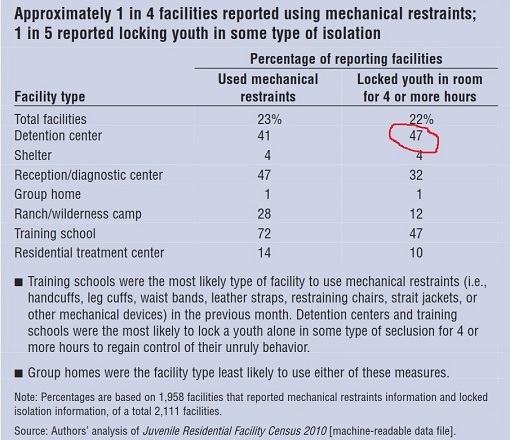
|
Eric Holder
Recorded PSA Published 14 May 2014
[AUTHENTICITY CERTIFIED: Text version below transcribed directly from audio]
Across the country, far too many juvenile detention
centers see isolation and solitary confinement as an appropriate way to handle
challenging youth, in particular youth with disabilities. But solitary
confinement can be dangerous, and a serious impediment to the ability of
juveniles to succeed once released. In a study released last year by the Office of Juvenile Justice and Delinquency Prevention, 47 percent of juvenile detention centers reported locking youth in some type of isolation for more than four hours at a time.1 We have received reports of young people who have been held in solitary confinement for up to 23 hours a day, often with no human interaction at all. In some cases, children were held in -- in small rooms with windows that were barely the width of their own hands. This is, to say the least, excessive. And these episodes are all too common. This practice is particularly detrimental to young people with disabilities -- who are at increased risk under these circumstances of negative effects including self-harm and even suicide. In fact, one national study found that half of the victims of suicides in juvenile facilities were in isolation at the time they took their own lives, and 62 percent of victims had a history of solitary confinement.2 Now let me be clear: There may be times when it becomes necessary to remove a detained juvenile from others in order to protect staff, other inmates, or the juvenile himself from harm. However, this action should be taken only in a limited way where there is a valid reason to do so, and for a limited amount of time; isolated juveniles must be closely monitored, and every attempt must be made to continue educational and mental health programming while the youth is in isolation. At a minimum, we must work to curb the over-reliance on seclusion of youth with disabilities. And at the Department of Justice, we are committed to working with states to do exactly this going forward. We must ensure in all circumstances -- and particularly when it comes to our young people -- that incarceration is used to rehabilitate, and not merely to warehouse and to forget. Our nationwide effort to end the unnecessary or excessive seclusion of youth with disabilities will not be completed solely with one settlement or one court filing. But as a department, we are dedicated -- and as Attorney General, I am committed -- to doing everything possible to ensure the effectiveness and the integrity of our criminal and juvenile justice systems. In the days ahead, we will continue to make good on our commitment to the best practices of law enforcement and the highest ideals of our nation. 1 Finding based on data collected in 2010 2 Hayes, L.M. (2004, February). Juvenile suicide in confinement: A national survey. National Center on Institutions and Alternatives, 24.:
Original Text, Audio, Video Source:
Justice.gov
Page Updated: 1/5/24 U.S. Copyright Status: This text and audio = Property of AmericanRhetoric.com. Video = Public domain. |
|
|
© Copyright 2001-Present. |
